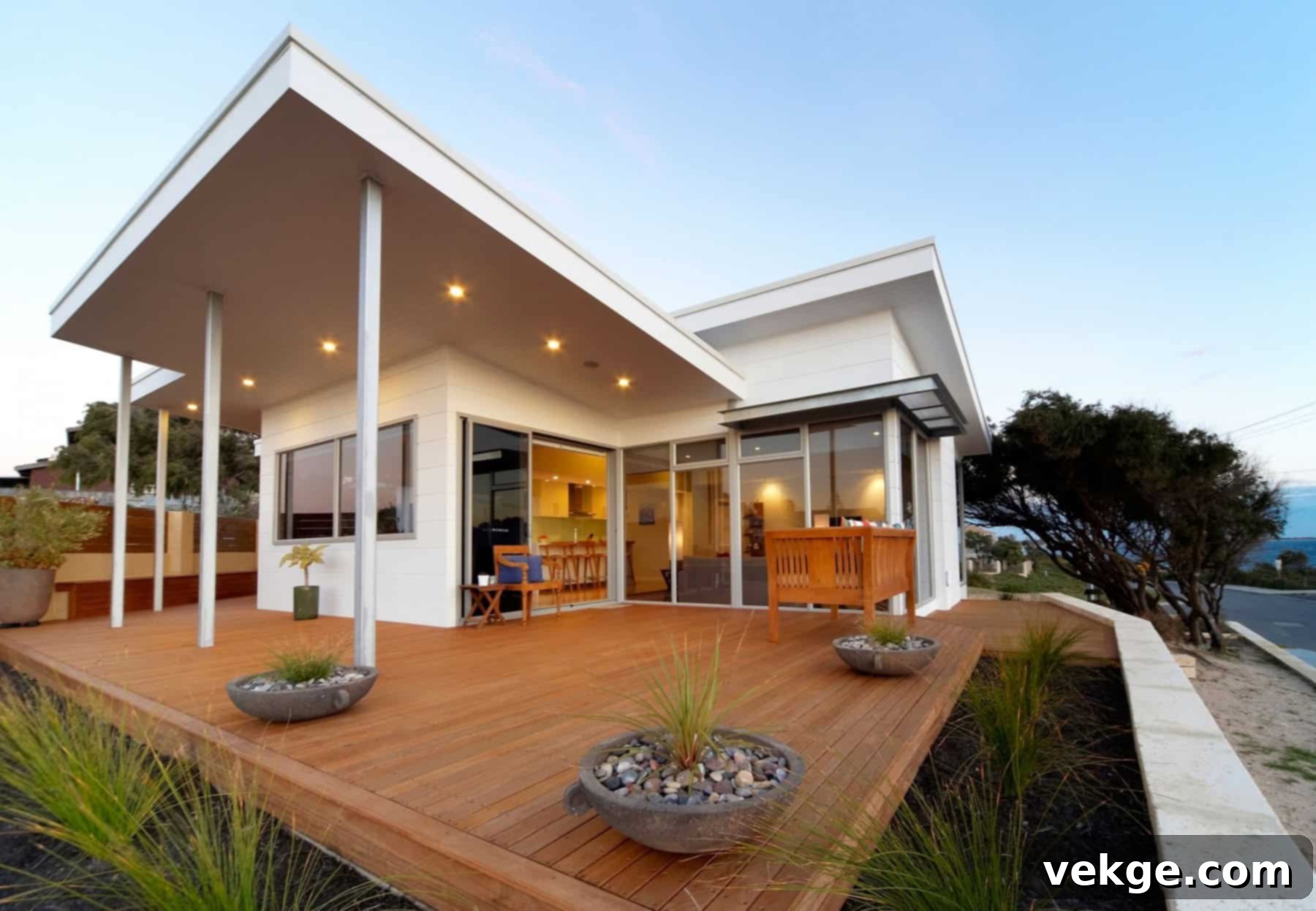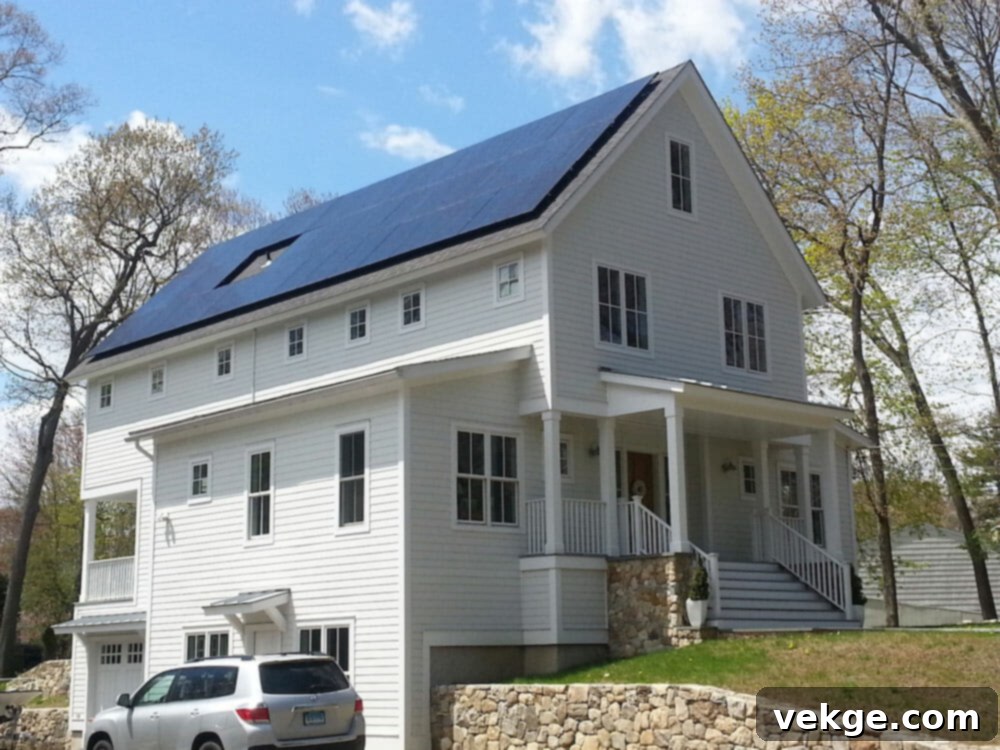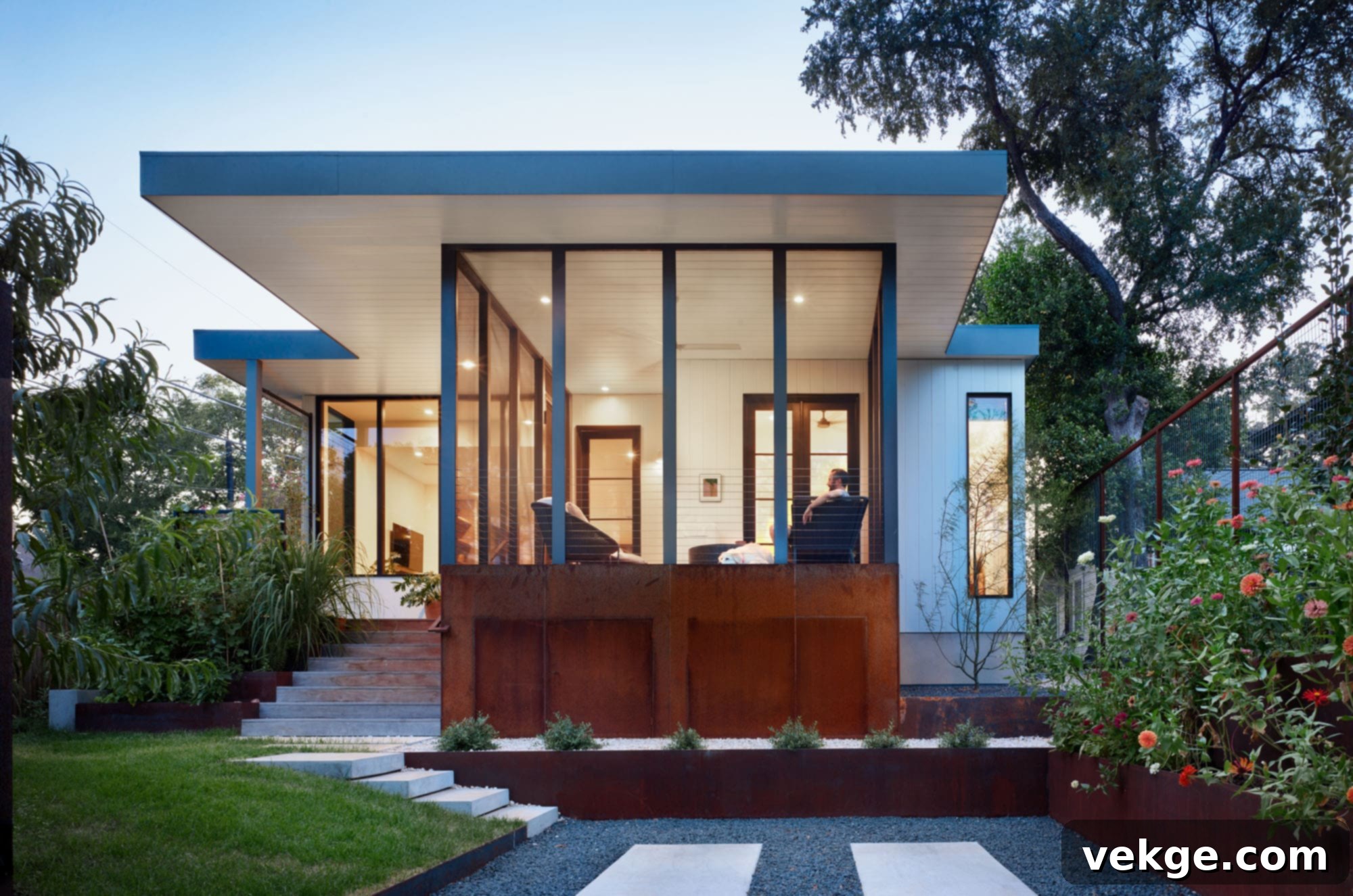Unlock Sustainable Living: Integrating Passive House Principles into Your Home Renovation
Embarking on a home renovation project offers a unique opportunity to not only refresh your living space but also to significantly enhance its performance, comfort, and sustainability. By thoughtfully integrating Passive House design principles into these upgrades, homeowners can unlock a multitude of benefits, ranging from dramatically reduced energy expenses to a healthier indoor environment and a minimized carbon footprint. This comprehensive guide explores how applying the rigorous standards of Passive House design can transform your renovation into a future-proof investment that pays dividends for years to come.
Passive House principles represent a holistic approach to building design, focusing on creating structures that are ultra-low energy and highly comfortable. When these principles are thoughtfully applied to existing homes during renovation, the results are transformative, allowing older buildings to achieve energy performance levels previously thought exclusive to new construction. Let’s delve into the core concepts and compelling advantages of adopting Passive House design in your next home renovation.
What is a Passive House Design?

Imagine living in a home where you rarely need to touch your thermostat, a sanctuary that remains refreshingly cool in the summer and wonderfully warm in the winter, all while consuming an incredibly minimal amount of energy. This is the promise of Passive House design. It’s an internationally recognized, performance-based standard for energy efficiency that champions a construction philosophy centered around intelligent design rather than complex mechanical systems. Unlike traditional building approaches that rely heavily on active heating and cooling, Passive House focuses on creating an incredibly well-insulated and airtight envelope that inherently maintains comfortable indoor temperatures.
The essence of a Passive House lies in its ability to harness ambient energy sources—such as the sun’s warmth and the heat generated by occupants and appliances—and to minimize any energy loss. This approach results in buildings that require up to 90% less heating and cooling energy compared to conventional structures, making them not just energy-efficient but truly net-zero ready. It’s a testament to building smarter, focusing on quality components and meticulous construction techniques to achieve unparalleled indoor comfort and sustainability.
The Key Pillars of Passive House Design
Achieving the rigorous Passive House standard involves a synergistic combination of several fundamental strategies. Each element plays a crucial role in creating a highly efficient and comfortable living environment:
- Superior Insulation: This isn’t just about adding more insulation; it’s about achieving exceptional thermal resistance across the entire building envelope, including walls, roofs, and floors. High-performance insulation materials, meticulously installed without thermal bridges (gaps where heat can escape or enter), ensure that heat remains inside during cold months and outside during warm ones, creating a stable indoor climate.
- Airtight Construction: A critical yet often overlooked aspect, airtightness prevents uncontrolled air leakage through cracks and gaps in the building’s fabric. By eliminating drafts and ensuring a continuous air barrier, passive homes maintain a consistent indoor temperature, prevent moisture infiltration, and significantly reduce energy waste associated with unwanted air exchange. Specialized tapes, membranes, and sealing techniques are employed to achieve this impressive level of airtightness.
- High-Performance Windows and Doors: Windows are often the weakest link in a building’s thermal envelope. Passive House design mandates the use of highly insulated windows and doors, typically featuring triple-glazing, low-emissivity (low-E) coatings, and insulated frames. These components minimize heat loss in winter and heat gain in summer, while also blocking harmful UV rays and providing excellent sound insulation. Strategic placement and sizing of windows also optimize natural daylighting and passive solar heat gain.
- Ventilation with Heat Recovery (HRV/ERV): In an airtight home, a controlled ventilation system is essential for maintaining excellent indoor air quality. Heat Recovery Ventilators (HRVs) or Energy Recovery Ventilators (ERVs) continuously supply fresh, filtered air while exhausting stale air. Crucially, these systems recover up to 90% of the heat (and sometimes moisture) from the outgoing air and transfer it to the incoming fresh air, ensuring minimal energy loss during ventilation. This provides a constant supply of clean, fresh air without compromising thermal comfort or energy efficiency.
- Optimal Utilization of Internal and Solar Heat Gains: Passive House buildings are designed to effectively utilize all available heat sources. This includes the heat generated by occupants, appliances, and electronic devices (internal gains). Furthermore, passive solar design principles are employed, such as strategically orienting the building and sizing south-facing windows to maximize solar heat gain during the colder months, while incorporating shading solutions (e.g., overhangs, external blinds) to prevent overheating in summer.
Benefits of Passive House Design in Home Renovations

Integrating Passive House principles into your home renovation transcends mere aesthetic improvements; it fundamentally transforms your living experience and the long-term value of your property. These principles offer a robust framework for creating highly energy-efficient, exceptionally comfortable, and environmentally responsible living spaces. When applied to existing homes, they bring forth a multitude of advantages that resonate with both personal well-being and global sustainability goals. Here are the key benefits:
Dramatic Improvement in Energy Efficiency
Passive House design and renovation is inherently focused on achieving unparalleled levels of energy efficiency. This is accomplished through a meticulous combination of superior insulation, exceptional airtightness, high-performance windows, and the strategic management of thermal bridges. By upgrading these components during your renovation, you can drastically reduce your home’s demand for active heating and cooling systems. For instance, installing triple-glazed windows, augmenting wall and roof insulation to Passive House levels, and sealing every possible air leak can cut your energy consumption by as much as 75-90% compared to a standard home. This means your heating and cooling systems work less, consume less energy, and contribute to a significant reduction in your monthly utility bills, offering tangible savings year after year.
Superior Indoor Air Quality and Health
One of the most profound benefits of a Passive House renovation is the dramatically improved indoor air quality. In a conventionally built home, air quality can be compromised by pollutants from building materials, outdoor allergens, and insufficient ventilation. Passive House design addresses this by incorporating an Energy Recovery Ventilator (ERV) or Heat Recovery Ventilator (HRV) system. These systems continuously filter and supply fresh outdoor air while exhausting stale indoor air, recovering valuable heat in the process. This constant, controlled exchange of air flushes out airborne pollutants, allergens, dust, odors, and excess humidity. The result is a consistently fresh, healthy indoor environment, significantly reducing the presence of volatile organic compounds (VOCs), mold spores, and other irritants, which is particularly beneficial for individuals with allergies, asthma, or other respiratory sensitivities.
Unmatched Thermal Comfort
Passive House principles are synonymous with exceptional comfort. Unlike traditional homes that often suffer from drafts, cold spots near windows, and fluctuating temperatures, a Passive House renovated home maintains a remarkably stable and uniform indoor temperature throughout. The combination of super insulation and airtightness eliminates drafts entirely, while high-performance windows ensure that interior surface temperatures closely match the air temperature, preventing radiant heat loss or gain. This means you can enjoy every corner of your home, even right next to a window, without feeling uncomfortable. The consistent thermal comfort achieved through these renovations transforms your home into a truly inviting and pleasant sanctuary, regardless of the weather outside.
Substantial Long-term Financial Savings
While the initial investment for a Passive House renovation might be higher than a superficial upgrade, the long-term financial benefits are compelling and substantial. The dramatic reduction in energy consumption translates directly into significantly lower utility bills, often cutting heating and cooling costs by 75% or more. Beyond energy savings, the durability of Passive House components and meticulous construction techniques often lead to reduced maintenance expenses. Furthermore, as energy prices inevitably rise, the savings potential of a Passive House will only become more significant. These homes also tend to have a higher resale value, appealing to a growing market of environmentally conscious buyers looking for lower operating costs and a superior living experience. Government incentives and rebates for energy-efficient upgrades can also help offset initial costs, making the return on investment even more attractive.
Enhanced Durability and Moisture Management
Passive House renovations prioritize quality components and rigorous construction standards, which naturally contribute to the long-term durability of the building. The emphasis on airtightness and controlled ventilation through HRVs/ERVs plays a crucial role in managing moisture within the building envelope. By preventing uncontrolled air and moisture infiltration, these homes are far less susceptible to condensation issues, mold growth, and subsequent structural damage. This meticulous attention to detail ensures that the building remains healthy, resilient, and structurally sound for decades, extending its lifespan and protecting your investment from costly repairs associated with moisture-related problems.
Reduced Carbon Footprint and Environmental Impact
By drastically minimizing the energy required for heating and cooling, Passive House renovations make a profound contribution to reducing carbon emissions. Buildings are significant contributors to global greenhouse gas emissions, and by transforming an existing home into an ultra-low-energy dwelling, homeowners actively participate in climate change mitigation efforts. This commitment to energy efficiency reduces reliance on fossil fuels, promotes sustainable living, and aligns with global goals for a greener future. A Passive House renovation is a tangible step towards a more sustainable lifestyle, offering both personal satisfaction and environmental stewardship.
Significant Noise Reduction
The highly insulated and airtight construction inherent in Passive House design offers a remarkable secondary benefit: exceptional noise reduction. The robust building envelope, combined with high-performance triple-glazed windows and doors, effectively blocks out external noise pollution, whether it’s traffic, noisy neighbors, or urban clamor. This creates an incredibly quiet and serene indoor environment, enhancing peace, privacy, and overall well-being. Imagine a home where the hustle and bustle of the outside world simply fades away, allowing for deeper relaxation and concentration.
Future-Proofing Your Home and Increasing Property Value
As climate concerns intensify and energy codes become increasingly stringent, a Passive House renovated home is perfectly positioned for the future. These homes are inherently future-proofed against rising energy costs and potential new regulations concerning building performance. Furthermore, the market demand for energy-efficient, comfortable, and sustainable homes is steadily growing. Investing in a Passive House renovation significantly increases your property’s market value, making it highly attractive to discerning buyers who prioritize low operating costs, environmental responsibility, and a superior living experience. It’s an investment that not only enhances your current lifestyle but also secures your home’s appeal and value for decades to come.
In conclusion, a home renovation project presents a golden opportunity to integrate the groundbreaking principles of Passive House design. By focusing on energy efficiency, unparalleled comfort, indoor air quality, and environmental sustainability, Passive House renovations offer a forward-thinking approach that delivers immense benefits to homeowners and the planet alike. It’s an investment in a healthier, more comfortable, and sustainable future, transforming your house into an enduring haven of efficiency and well-being.
